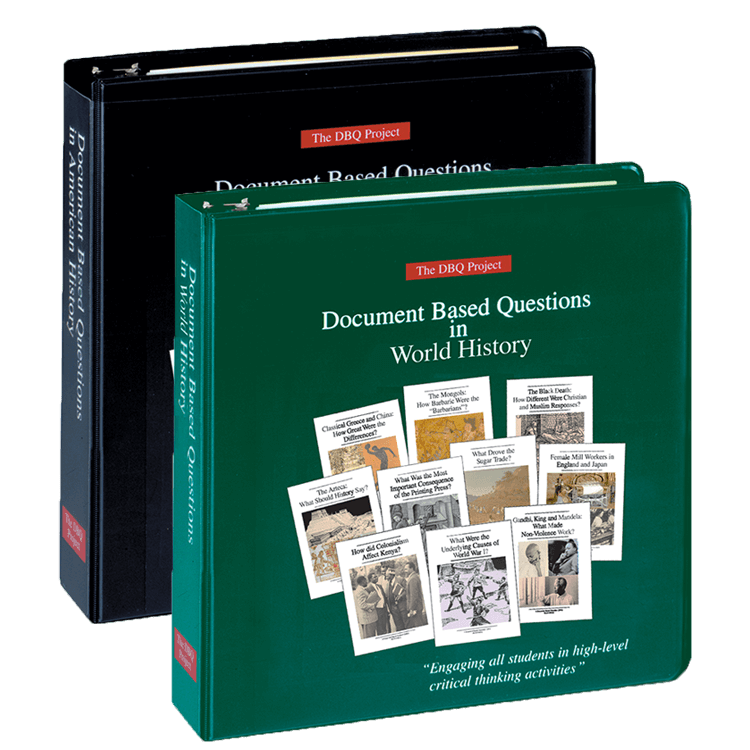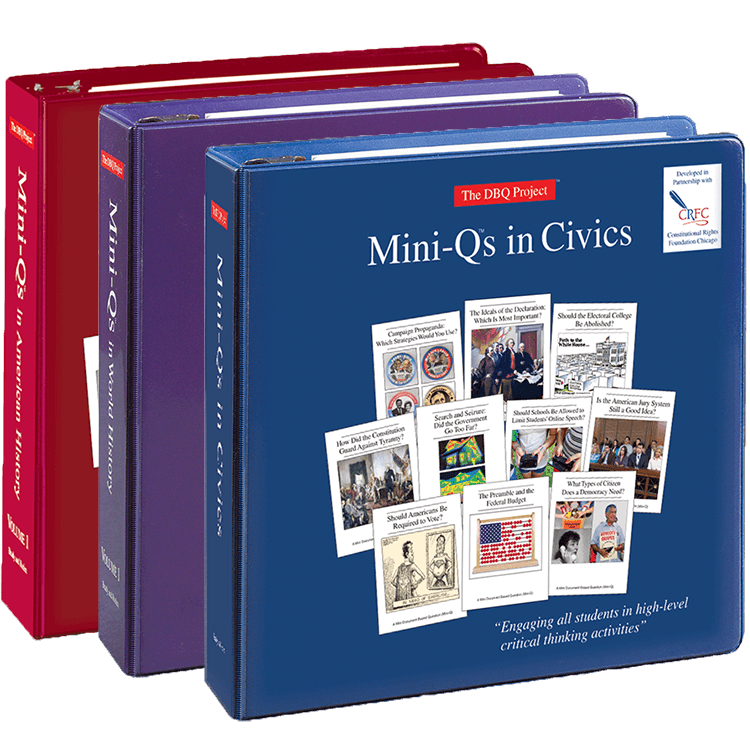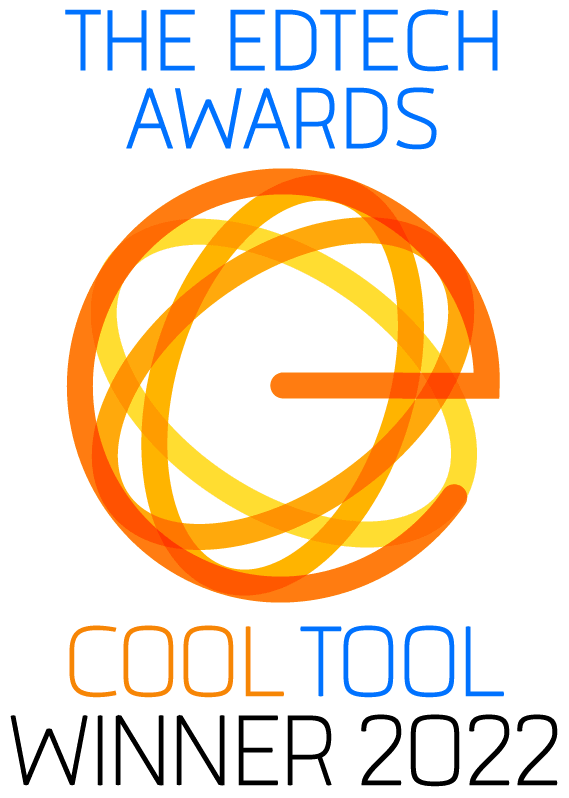About DBQs and Mini-Qs

DBQs
Our DBQ units provide students with the opportunity to engage in the same historical thinking and writing students use in Mini-Qs. The main difference is that with DBQs (often referred to as “Mother-Qs”), students wrestle with more documentary evidence. Each unit is written twice to differentiate between the longer version (14-26 documents) and the shorter version (8-12 documents). Teachers choose which version to use based on time and student reading level. When students construct their DBQ essays, they often use several documents per paragraph to prove each part of their thesis.

Mini-Qs
Mini-Q lessons are shorter (3-7 documents) but they also help students understand the process of close analysis, interrogation of documents, and argument writing. Each Mini-Q is written twice to differentiate between the highly scaffolded “enhanced version” and the less scaffolded “clean version.” This means Mini-Qs work for students of all skill levels. To help teachers demonstrate elements of proficient writing, each Mini-Q lesson comes with three norming essays: non-proficient, proficient, and higher proficiency. Students and teachers alike may analyze these sample essays to evaluate writing, to learn protocols for using and citing evidence, and to address questions of style. In short, Mini-Qs are shorter, more scaffolded DBQs.
Shared Features

Multiple Units
Every lesson separated by its own tab and formatted ready-to-reproduce for students.

Engaging questions
All questions encourage interpretation, have more than one correct answer, and are arguable.

Differentiation
Each lesson is scaffolded for students at different levels to provide teachers the flexibility to support students, whatever their ability.

Clear pedagogy
The pedagogy stays the same whether teaching a longer DBQ or a Mini-Q, thus creating a clear vertically-aligned progression.

Primary and secondary sources
Students use documents just like historians to answer questions. Documents are central, not supplementary.

Hook Exercise
Creates interest, promotes discussion, and builds students’ confidence as they work in pairs and small groups as well as the whole class.

Background Essay
Levels the playing field in classrooms with students by building context. Provides all students with enough background to understand the documents.

Graphic organizers to aid document analysis
Different graphic organizers help students of various ability levels analyze and record details about each document.

Categorization Tools
We help students develop analytical categories by talking about buckets. Friendly terminology helps students embrace rigorous work.

Explicit writing supports
We use student-friendly graphic organizers and to help students understand how to write an argument-based thesis.

Essay Outlines
Teachers use the DBQ Project outline or the more structured guided outlines to support students of different ability levels.

Teaching Tips
Every document contains content-rich suggestions to help teachers engage students in analyzing documents.

Content Notes
Additional historical background about the documents helps build teachers’ confidence and knowledge.

Color Visuals
All visual documents are colorized for use with document cameras.

Teacher’s toolkit
A wealth of resources to help students analyze documents and write evidence- based essays, conveniently located in each binder.
DBQ Features

DBQs are longer
Students work with 8-18 documents and wrestle with some longer documents than those provided in the Mini-Qs.

Differentiation by length
Every unit comes in a long version and a short version. The short version has 8-12 documents while long version has 14-18.

Document support
Document analysis questions to help students unpack each document. These are located in the “Teachers Toolkit.”

Hook activity
In the DBQs, the hook is in the “Teacher Toolkit” instead of being embedded in the lesson as it is in the Mini-Qs.

Rigorous Bucketing Process
With more documents, students wrestle with more complexity. Students group 2-5 documents in each category.
Mini-Q Features

Mini-Qs are Short
Students usually work with 4-6 documents. This provides practice reading and interpreting without overwhelming students.

Differentiation by ability level
Units come in 2 versions. The enhanced version is highly scaffolded. The clean version includes the same documents, but no support.

Document support
Document analysis questions located directly below each document in the EV version.

Hook Activity
In the Mini-Qs, the Hook Exercise is embedded in the materials and appears as “Step One” in every Mini-Q lesson.

Straightforward Bucketing
Since Mini-Qs have fewer documents, each bucket might contain evidence from only one or two documents.
“They work! I've used both the regular DBQ's and the Mini-Q's in both World History (regular and honors 9th grade) and AP US History. They fit in well with my APUSH curriculum, but the real test came last year with my 9th grade World History class: the DBQ's were the only way I could engage my class in writing. They felt empowered, they had fun, and they learned how to write using evidence and analysis.”
– Pam Hering, Teacher, Ballard High School, Seattle Public Schools


